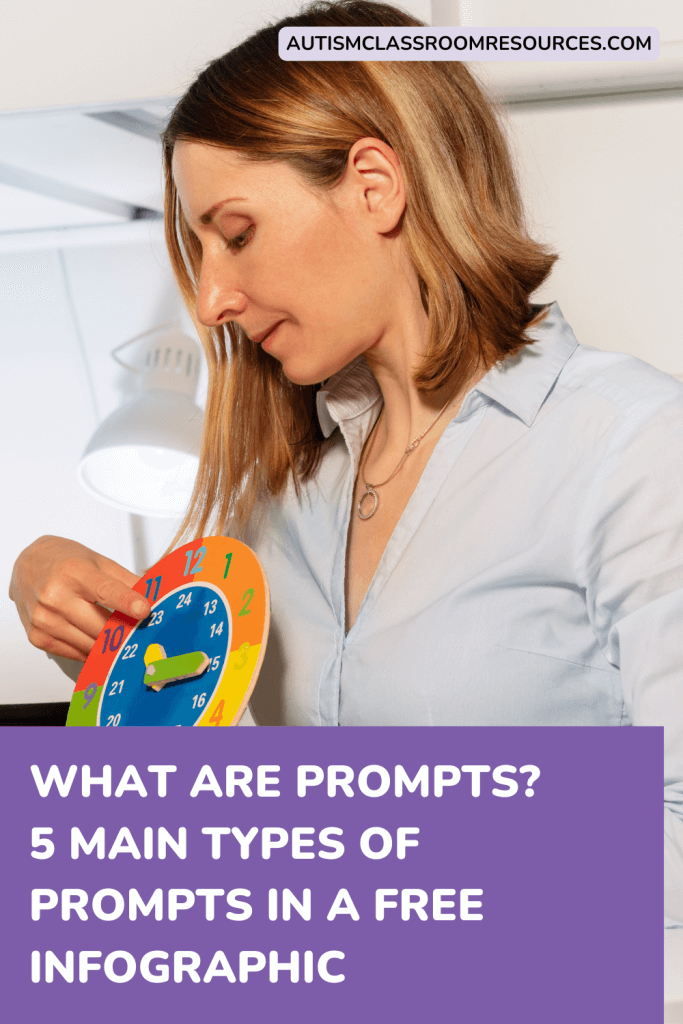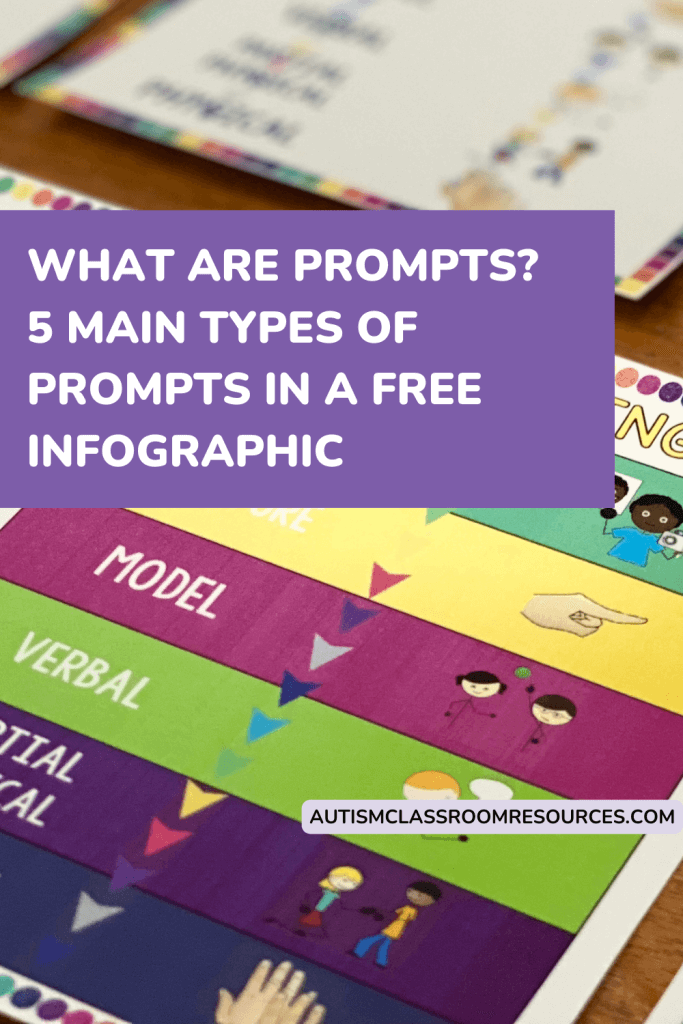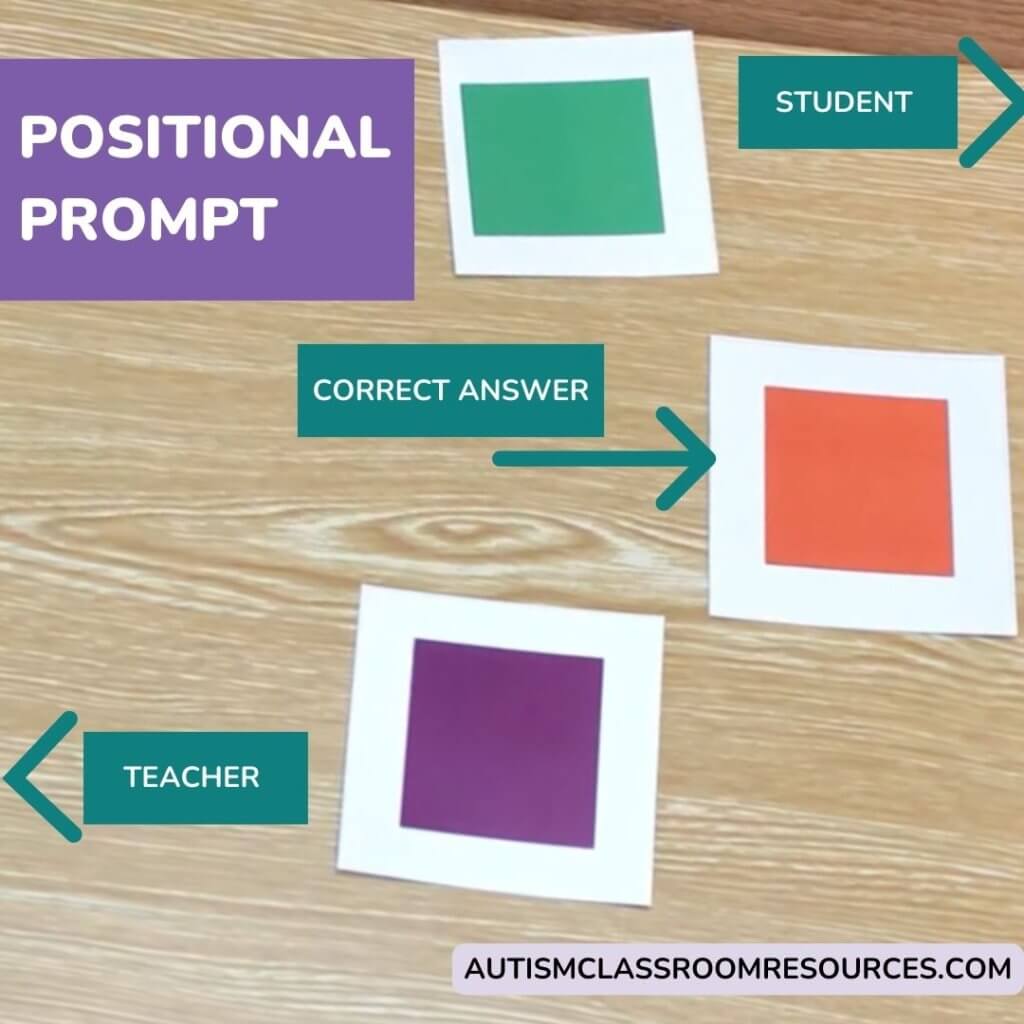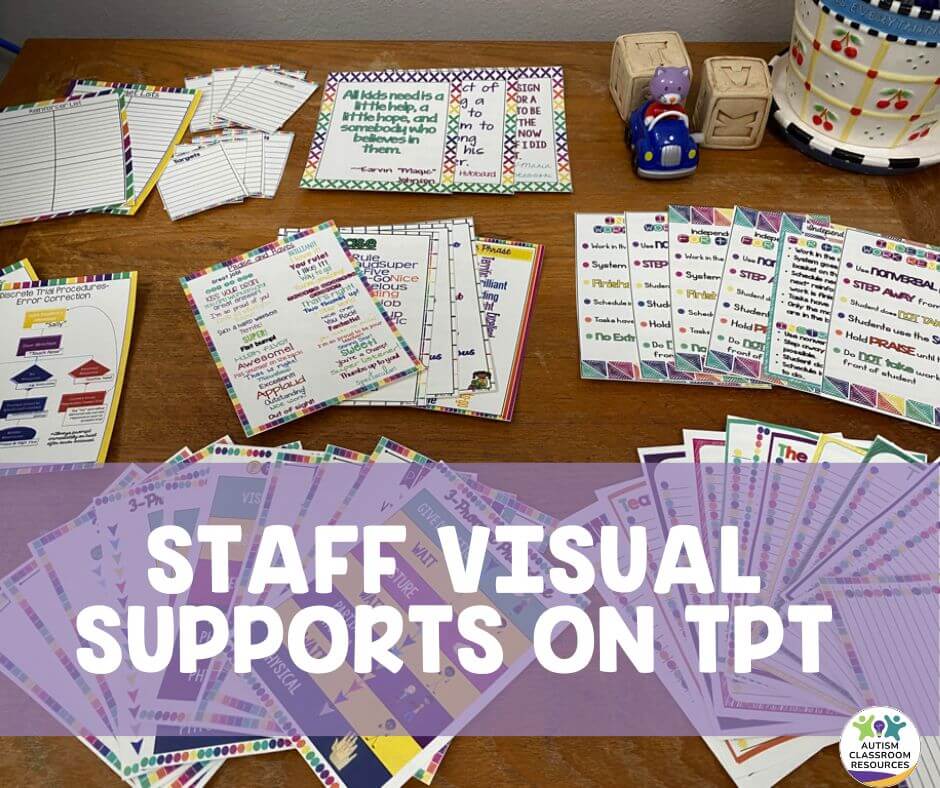Sharing is caring!



As we are talking about prompts, I thought it might help if I addressed what are prompts and the types of prompts, before we talk about how to use them and fade them. Surprisingly this isn’t quite as easy as you would think it would be to define the different types of prompts because professionals use different terms to define them. So having the terminology in place will be helpful in talking about how we increase correct responses, use the least intrusive prompt possible, and fade prompts in a systematic manner so we avoid making students prompt dependent.
What Are Prompts?
First, a prompt is anything you add to instruction to help the student get to the correct responses. This means that it includes pretty much anything that is done after the direction is given or can be planned in advance. This might include hand-over-hand prompting (physical prompts) gestures, the way the material is created or presented, or even just a look on the teacher’s face. Often we use them to help students avoid making errors, and then fade them out so the student is more indepenedent.
Functional Types of Prompts
One of the difficulties of clearly defining what are prompts is that there are different ways that prompts are defined. Sometimes we define them by the type of assistance we are providing. A physical prompt involving full hand-over-hand to help the student complete the task is an example of this type of prompt type.
Response Prompt
But prompts can also serve different functions or purposes. Essentially there are response prompts and stimulus prompts. Response prompts are those in which we respond to the student in some way to get the right answer. A verbal prompt or a physical prompt are response prompts because we respond to the student’s behavior with a prompt. And ultimately we want to choose the prompts that allow us to fade them effectively.
Stimulus Prompt
Stimulus prompts are a type of visual prompt in which the cue is built into the stimulus. Teaching a student to read the word red by making the word red and then fading it to black. You need to fade these types of prompts and there are some research studies looking at some interesting ways to teach reading by showing a picture that over time changes into word. For a more complete description of prompts, including some concepts I will cover later in the series, check out this site.
Prompt Hierarchy
A prompt hierarchy is typically used to help us organize prompting strategies to fade our prompts out and help the student be more independent. The one in the infographic below focuses on a most-to-least prompting. But you can also fade prompts using a least to most prompting procedure.
Verbal Prompt
A verbal prompt involves using spoken words or sounds as a verbal cue to help the student get to the correct response or behavior. Verbal prompts tend to move around different parts of the prompt hierarchy depending on the skill and the procedure being used. I include them as more intrusive prompts because someone has to be there to provide them.
Positional Prompt
A positional prompt is when the materials provide the prompting. So a teacher places materials on the table so the right material, like a picture card with the correct response closest to the student. You can learn more about stimulus prompts and how to use them (and why they are a good choice to use) in this post. And check out this post on the pros and cons of stimulus prompting.

Visual Prompt
A visual prompt is when we use a picture or written word that we can either put down where the student can see it or could be built into their environment. The visual cue serves as reminder of the correct answer.
I put visual prompts at the less intrusive end of the scale because you can leave them in place and no one has to be there to make them happen. We all use visual prompts, like when we make a grocery list or a to-do list. Sometimes we want to fade them, and sometimes it’s not so important.
In addition, a verbal prompt is often very difficult to fade because they often become part of the instructions. But, hey are often the easiest for us to use because talking and instructing come naturally to us. Because of this, we often use them without realizing we are prompting.
My general rule is if you repeat the direction, you have used a verbal prompt. We want students to complete an action that is asked when it is asked once. We don’t want to train them to respond only after we repeat the instruction. We have to take responsibility for the instruction and how we do that.
Gestural Prompt
A gestural prompt is when we point to the right answer or to a reminder of the right answer. This one is pretty clear — we are using a gesture.

Model prompts would be considered gestural prompts. In a model prompt, you are modeling the response you want to see from the student. So if I tell him to drink, I might pantomime drinking with an imaginary cup. If I want him to draw a straight line with a pencil, I might draw a line on my paper as a model.
Physical Prompts
A physical prompt is when we use hand over hand assistance for the student to complete the right answer. So consider if I put down two cards, one yellow and one blue, and give the direction to identify blue. In a full physical prompt, I might take the student’s hand and guide
A partial physical prompt would be used when you put the student’s hand on the water faucet control and then let go to see if he completes the action on his own. This might be one step of fading physical prompts.
Even More Prompts
Finally, there are more types of prompts than the ones listed here. The ones I list are primarily response prompts–ones in which we given information about the response. However, visual prompts and some positional prompts can be considered stimulus prompts. There are also time delay prompts in which we change the amount of time we wait for an independent response. Learn more about time delay prompts in this post.

As a teaser there is some information that indicates we may not want to use positional prompts and stimulus prompts because they change the key element of the stimulus we are working with–they change what the word you are teaching looks like, for example. I’ll talk more about that later in the series.







